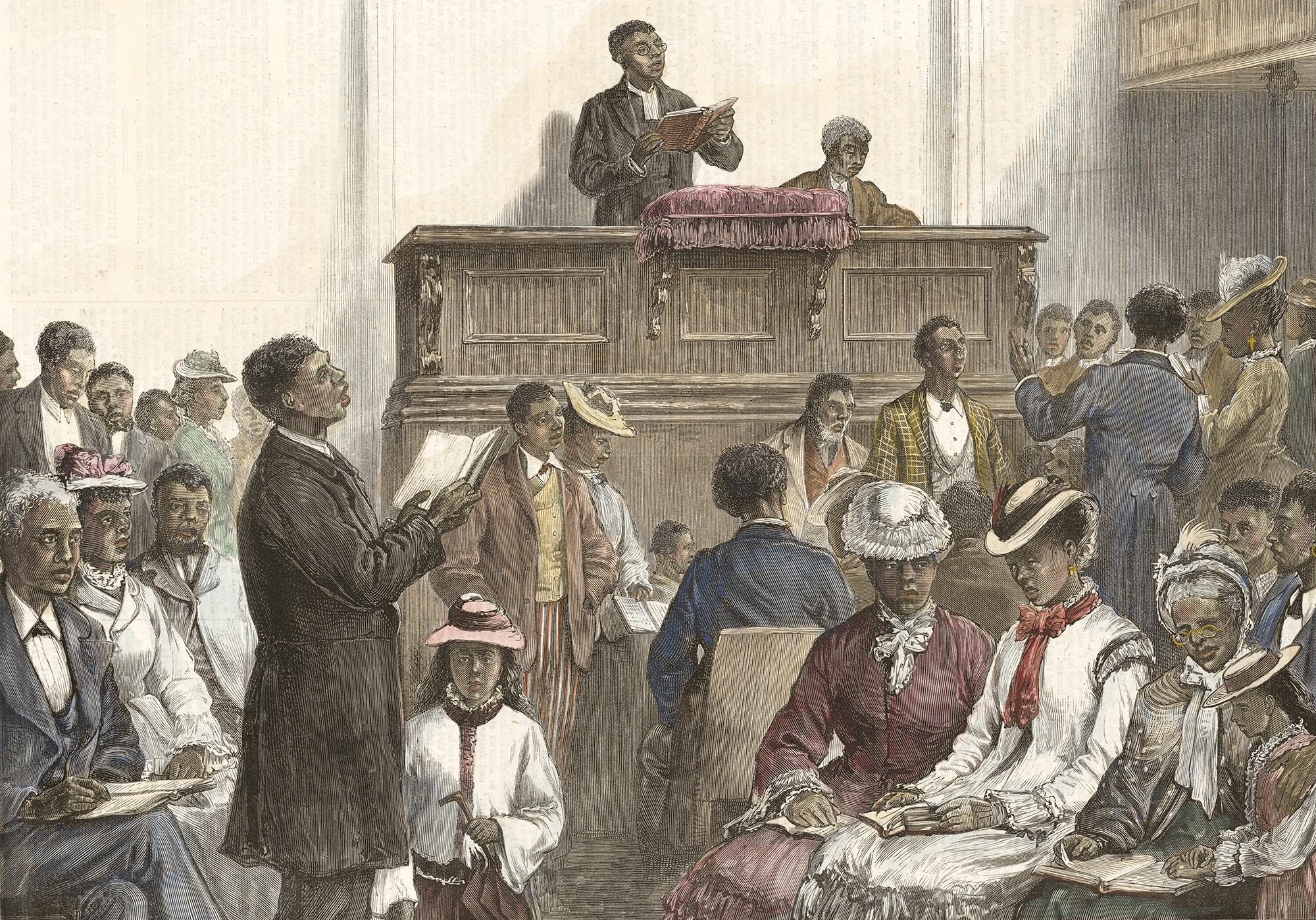
OHIO
Reconstruction Vignette
| You say you have emancipated us. You have; and I thank you for it. You say you have enfranchised us. You have; and I thank you for it. But what is your emancipation? What is your enfranchisement? What does it all amount to, if the black man, after having been made free by the letter of your law, is unable to exercise that freedom, and, after having been freed from the slaveholder’s lash, he is to be subject to the slaveholder’s shot-gun? Oh! you freed us! You emancipated us! I thank you for it. But under what circumstances did you emancipate us? Under what circumstances have we obtained our freedom? Sir, ours is the most extraordinary case of any people ever emancipated on the globe. I sometimes wonder that we still exist as a people in this country; that we have not all been swept out of existence, with nothing left to show that we ever existed. . . . When you turned us loose, you gave us no acres: you turned us loose to the sky, to the storm, to the whirlwind, and, worst of all, you turned us loose to the wrath of our infuriated masters. |
Frederick Douglass (1818-1895)
Source: National Portrait Gallery
Writer, orator, and activist Frederick Douglass addressed the Republican National Convention in Cincinnati, Ohio, in June of 1876. With these words, he interrogated the meaning of “emancipation” and “enfranchisement” to the many white Republicans who had begun their retreat from Reconstruction.
Source: Making of America
Ohio
Standards Overview
Coverage of Reconstruction: Partial
ZEP Standards Rubric Score: 2 out of 10
The coverage of Reconstruction in Ohio’s standards is partial, and their content is subpar. The Ohio Department of Education adopted its current learning standards for social studies in February 2018 and revised them in January 2019. Ohio is a local-control state but the state standards offer relatively detailed guidance for local curricula.
Grade 8
A grade 8 course covers the colonial era to Reconstruction. The standards require students to understand that “The Reconstruction period resulted in changes to the U.S. Constitution, an affirmation of federal authority and lingering social and political differences.”
High School
Reconstruction is also briefly covered by a high school course that spans Reconstruction to the present. However, the course focuses primarily on the legacies of Reconstruction, including the Reconstruction Amendments and the rise of Jim Crow. The standards require students to understand that:
Following Reconstruction, old political and social structures reemerged and racial discrimination was institutionalized.
The constitutional amendments known collectively as the Reconstruction Amendments extended new constitutional protections to African Americans, though the struggle to fully achieve equality would continue.
Educator Experiences
Teachers who responded to our survey described the state standards as overly broad. One Columbus middle school teacher explained “what needs to change” to improve Reconstruction education in Ohio “is more resources for teachers about it outside of a textbook.”
Several teachers reported using outside resources, including articles by Eric Foner, the book Stamped: Racism, Antiracism, and You by Jason Reynolds and Ibram X. Kendi, and DBQs from the Stanford History Education Group to supplement their lesson plans. Time, however, remains a factor in whether teachers are able to use such resources in the classroom. Michael Ruther, a middle school teacher in Amelia, explained that it takes a lot of time for teachers to “find and build” great lesson plans, even when some resources already exist.
The timing of the Reconstruction unit is also a limiting factor. Ric Doringo, a high school social studies teacher in Gates Mills explained in an article in Learning for Justice, “Several years ago, the U.S. history curriculum was divided between middle and high school levels, with the high school course starting in 1877, after Reconstruction. On one hand, this structure allowed for a more in-depth study of post-Reconstruction topics. However, after a few years, I began to think that Reconstruction needed to be more closely studied by older students and brought back to high school.” Ruther argued that the placement of Reconstruction at the end of the grade 8 social studies course means that “it sometimes gets the buzzsaw.”
Assessment
Ohio’s state standards on Reconstruction are insufficient. The content of the middle school standards is historically accurate and does a good job of emphasizing the positive and negative legacies of the era and the racist backlash that followed. However, their focus is almost exclusively on national political events. There is little specific coverage of Black people’s efforts to gain freedom and equality, obtain control of land and labor, and mobilize politically to protect and expand their rights. The standards also do not mention white supremacy or the KKK.
The high school standards are particularly lacking, and according to our survey responses, educators rarely teach the topic in detail at that level. The section on the reemergence of “old political and social structures” is especially troublesome as it does not name either white supremacist terrorism or disenfranchisement as the cause of that reemergence.
Teaching Reconstruction effectively requires centering Black people’s struggles to redefine freedom and equality and gain control of their own land and labor during and after the Civil War. Any discussion of Reconstruction must also grapple with the role of white supremacist terrorism in the defeat of Reconstruction and the negative and positive legacies of the era that persist to this day.
In 2021 and 2022, Republican legislators introduced bills designed to ban teaching about systemic racism, sexism, and “divisive concepts,” and prevent students from receiving credit for service learning with advocacy groups. These bills did not pass, but their introduction is still troubling. Several respondents to our survey expressed concern about the possible chilling effects on classroom education that such bills can have around the country, particularly on discussions of the history and legacies of Reconstruction.